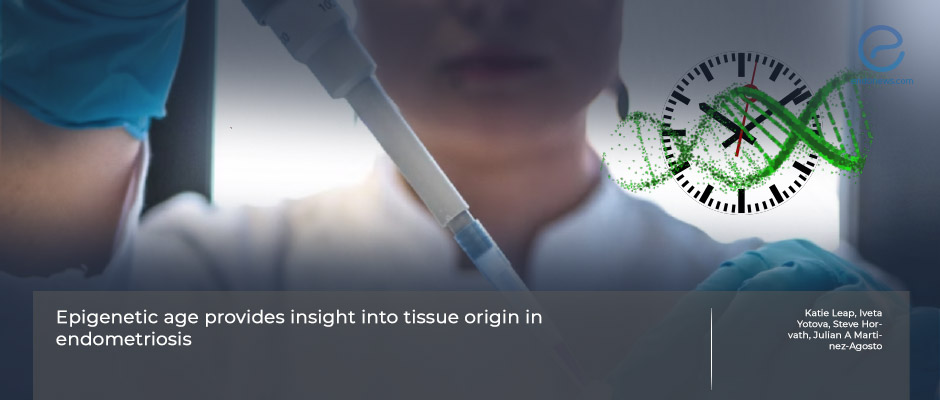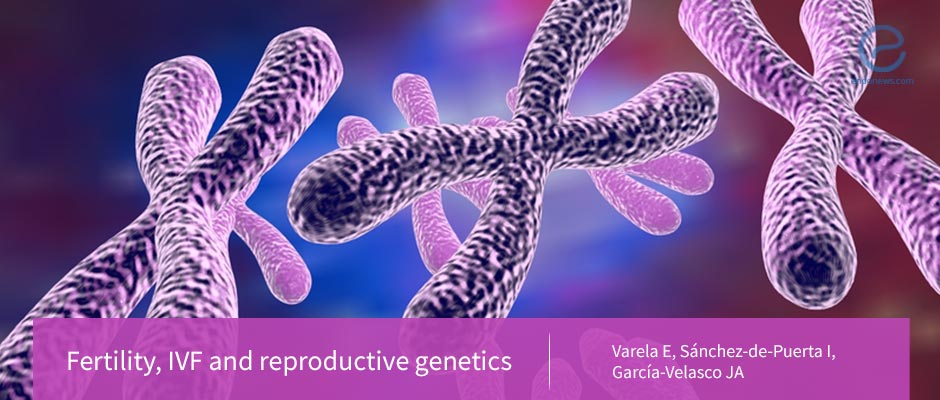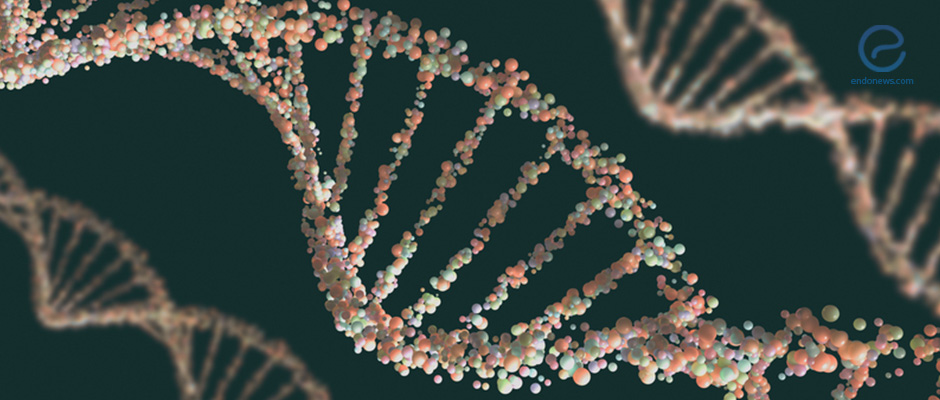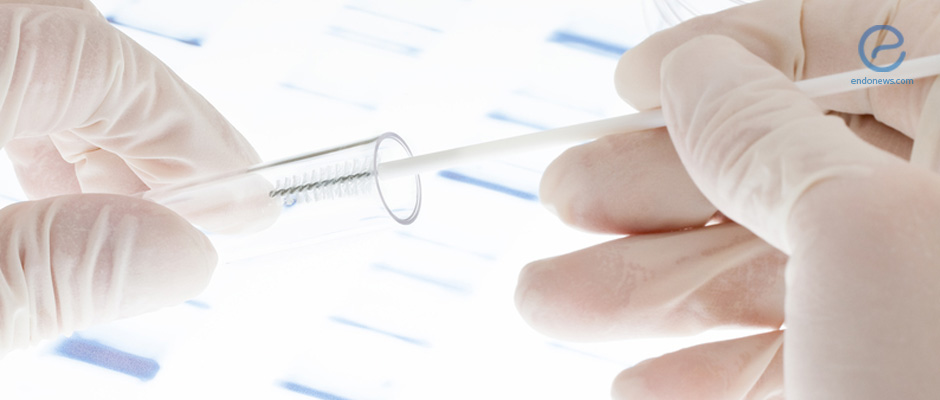Study Points to Polygenic Etiology in Familial Endometriosis
A team of researchers from Italy identified new genes that may be associated with endometriosis. The team analyzed a multi-generational family affected by the disease. Their findings support a polygenic model of the disease, i.e., a model where more than one…
Key Points Lay SummaryHeavy Menstrual Bleeding Shares Genetic Risk with Endometriosis and Fibroids
Heavy menstrual bleeding (HMB) is a common yet underexplored condition affecting millions of women worldwide. It can severely impact quality of life and is often associated with other gynecologic disorders like endometriosis and fibroids. In a recent landmark study published…
Key Points Lay SummaryEndometriosis and Ovarian Cancer: A Genetic Connection
Academicians Zhang and Yan from Ningbo University, Zhejiang, China, have recently published a pivotal study in Scientific Reports examining the cancer risk associated with endometriosis. Endometriosis, a chronic condition affecting approximately 6–10% of women worldwide, significantly diminishes quality of life…
Key Points Lay SummaryEndometriosis and PCOS Share Common Risk Genes
There is a genetic correlation and shared risk genes between endometriosis and polycystic ovary syndrome (PCOS), found a new study published in the scientific journal Frontiers in Endocrinology. “These findings provide insights into the potential mechanisms behind their comorbidity and…
Key Points Lay SummaryA review for genetics of endometriosis.
There is an increased risk of developing endometriosis among first-degree relatives, which can raise suspicions of the role of genetic factors in endometriosis. Genome-wide association studies and next-generation sequencing have identified numerous genetic loci and variants relating to the disease.…
Key Points Lay SummaryExploring tissue origins and age characteristics in endometriosis
Despite its widespread occurrence, the precise factors leading to endometriosis and the nature of its symptoms remain uncertain. To better understand the disease and improve treatment, Leap et al. from the US and Austria explored the use of DNA methylation…
Key Points Lay SummaryScientific unfolding will lead new drug targets
Drs. Dolmans and Donnez from academic institutions located in Brussels, Belgium, have published their comprehensive review on the current pathophysiological concepts in endometriosis with possible drug treatment potentials in the recent issue of a scientific journal named “Biomolecules”. As a…
Key Points Lay SummaryScientists Try to Understand Consequences of Genetic Changes in Endometriosis
The protocol of the "Endometriosis Research Queensland Study" has been published in the scientific journal BMJ Open. The aim of the study is to collect endometrial tissue associated with the disease and chart its genetic architecture. This way, the researchers aim to…
Key Points Lay SummaryEpigenetic changes in endometriosis: A new target area for therapy
Epigenetics is the heritable genetic modifications and changes in chromosomes without alterations in the DNA sequence. Numerous mechanisms, like DNA methylation and RNA editing to mention a couple, have been discovered as epigenetic alterations that are triggered by environmental factors.…
Key Points Lay SummaryEndometriosis Prediction by "Machine Learning"
To develop a predictive model for endometriosis and to re-assess the contribution of known risk factors, Blass et al. from the Hebrew University of Jerusalem, Jerusalem, Israel used the data of the UK biobank by machine learning-based models. They compared and…
Key Points Lay SummaryInflammatory and genetical background of endometriosis may yield new therapeutic approaches
Elisa Giacomini and colleagues from medical centers in Milan, Italy have published their review manuscript on the inflammatory and genetical pathogenetic background of endometriosis in a recent issue of “International Journal of Molecular Sciences”, suggesting also new therapeutic approaches. The inflammatory…
Key Points Lay SummaryGenetic Predisposition to Endometriosis
Certain genetic polymorphisms, called SNPs, in the ESR2 and CYP19A1 genes, were more prevalent among patients with endometriosis compared to women without the disease according to a study by researchers in Poland. A better understanding of the genetic mechanisms underlying the…
Key Points Lay SummaryRole of race in science
Although genome pioneers and social scientists agreed on not using the race as a variable in genetic research during human genome sequencing time, the use of race as a biological category has risen since. Traditionally ‘race’ has been used as…
Key Points Lay SummaryRace, socioeconomic status, and health
Racial disparities in health have been long noted in the United States. The differences in socioeconomic status across racial groups are a major contributor to racial disparities in health. However, race reflects multiple dimensions of social inequality. Understanding and effectively…
Key Points Lay SummaryA rigorous literature review on endometriosis
Bulun SE. et al., from Feinberg School of Medicine, Northwestern University, Chicago, conducted a rigorous literature review on endometriosis. This outstanding review by Dr. Bulun et al. addresses the definition, remarkable medical features, clinically useful research findings, prevalence and distribution,…
Key Points Lay SummaryNew Link Between Endometriosis and Genetics?
Two new genes have been identified that may be associated with endometriosis. This finding increases our understanding of the biology of endometriosis and may take us one small step further towards the development of new ways of treating the condition. …
Key Points Lay SummaryPolymorphism of IL12B May Help Solve Endometriosis
Zhao et al. recently published a paper titled “A functional promoter polymorphism in interleukin 12B gene is associated with an increased risk of ovarian endometriosis” in Gene. The research group from Hebei Medical University wanted to explore the potential roles…
Key Points Lay SummaryThe comparison of Chinese women in terms of risk factors, genetics and treatment of endometriosis
Endometriosis is characterized by endometrial implants outside of the uterine cavity. There is a wide spectrum of symptoms of this disease including dysmenorrhea, chronic pelvic pain, dyspareunia, extragenital symptoms. The pathogenesis of endometriosis appears to be multifactorial, including ectopic endometrial…
Key Points Lay SummaryExtending the Female Fertility Clock
Varela, Sanchez-de-Puerta, and Garcia-Velasco are a group of scientists from various institutions in Spain and they recently published a review article titled “Fertility, IVF and reproductive genetics” in Current Opinion in Obstetrics and Gynecology. In this publication, the authors discussed…
Key Points Lay SummaryIndependent development of endometrial epithelium and stroma within the same endometriosis
Endometriosis is one of the leading causes of chronic pelvic pain in women during their childbearing years. A popular theory for the pathogenesis of endometriosis posits that circulating progenitor cells differentiate into the endometrial stroma and glandular tissue once they…
Key Points Lay SummaryThe use of histone deacetylase inhibitors for the treatment of endometriosis
Histone deacetylase inhibitors prevent the deacetylation of specific gene sequences thereby allowing the increased transcription of certain genes. Trichostatin A, a histone deacetylase inhibitor, has been seen to induce the expression of a pro-apoptotic gene called nonsteroidal anti-inflammatory drug-activated gene…
Key Points Lay SummaryInhibition of Histone methyltransferase for fighting endometriosis
Although the histone methyltransferase EZH2 and its product H3K27me3 are well studied in cancer, little is known about their role and potential as therapeutic targets in endometriosis. It has been previously reported that the endometriotic lesions are characterized by global…
Key Points Lay SummaryWhen Endometriosis Becomes Malignant
Anglesio and Yong recently wrote a review titled “Endometriosis-associated Ovarian Cancers” that was published in Clinical Obstetrics and Gynecology. This review explored the relationship between endometriosis and ovarian cancers. It is important to note that this review is a compilation of…
Key Points Lay SummaryEpigenetic regulation of the pathological process in endometriosis.
Epigenetic mechanisms have been recognized as important players in the development of a broad range of human diseases including endometriosis. A growing body of evidence shows that the remodeling of retrograde endometrial tissues to the ectopic endometriotic lesions involves multiple epigenetic…
Key Points Lay SummaryEndometriosis-related Mitochondrial DNA Control Region Polymorphisms Found in Brazil
The genetic basis for the formation of endometriosis is still at large. Andres et al. from the University of Sao Paulo, Brazil, looked at various individuals, with and without endometriosis, to determine polymorphisms in the mitochondrial DNA (mtDNA) control region that…
Key Points Lay SummaryThe role of gene polymorphisms in the pathogenesis of endometriosis
Single nucleotide polymorphisms (SNPs) are the most common type of genetic variations that exist among individuals. These polymorphisms differ by a single nucleotide base pair and are scattered throughout the human genome. Scientists use SNPs as a biological marker to…
Key Points Lay SummaryUpdates in the Field of Endometriosis: Epigenetics
In this chapter titled “A Review of the Epigenetic Contributions to Endometriosis,” Grimstad and Decherney examine various epigenetic influences that drive endometriosis disease progression. The epigenetic alterations they discuss include DNA methylation, histone modification, chromatin architecture changes, nuclear receptor modulation,…
Key Points Lay SummaryUpdates in the Field of Endometriosis: Genetics
This chapter written by Krishnamoorthy and Decherney re-evaluate the literature concerning the genetics of endometriosis. The genetic mechanisms and signaling pathways that led to endometriosis are updated and the tools that help researchers find these abnormal genes and pathways are…
Key Points Lay SummaryUpdates in the Field of Endometriosis
A lot of progress has been made thus far in the field of endometriosis. Research has discovered various genetic and epigenetic components involved in endometriosis. There has also been a progression in the diagnosis and treatment of the disease since…
Key Points Lay Summary
 By Özge Özkaya
By Özge Özkaya


 By Nasuhi Engin Aydin
By Nasuhi Engin Aydin


 By Selma Oransay
By Selma Oransay

 By Eylül GÜN
By Eylül GÜN







 By Nadire Duru
By Nadire Duru

 By Dr. Youngran Park
By Dr. Youngran Park

 By Irem Onur
By Irem Onur


 By Kasthuri Nair
By Kasthuri Nair

 By Hale Goksever Celik
By Hale Goksever Celik


 By Murat Osman
By Murat Osman








